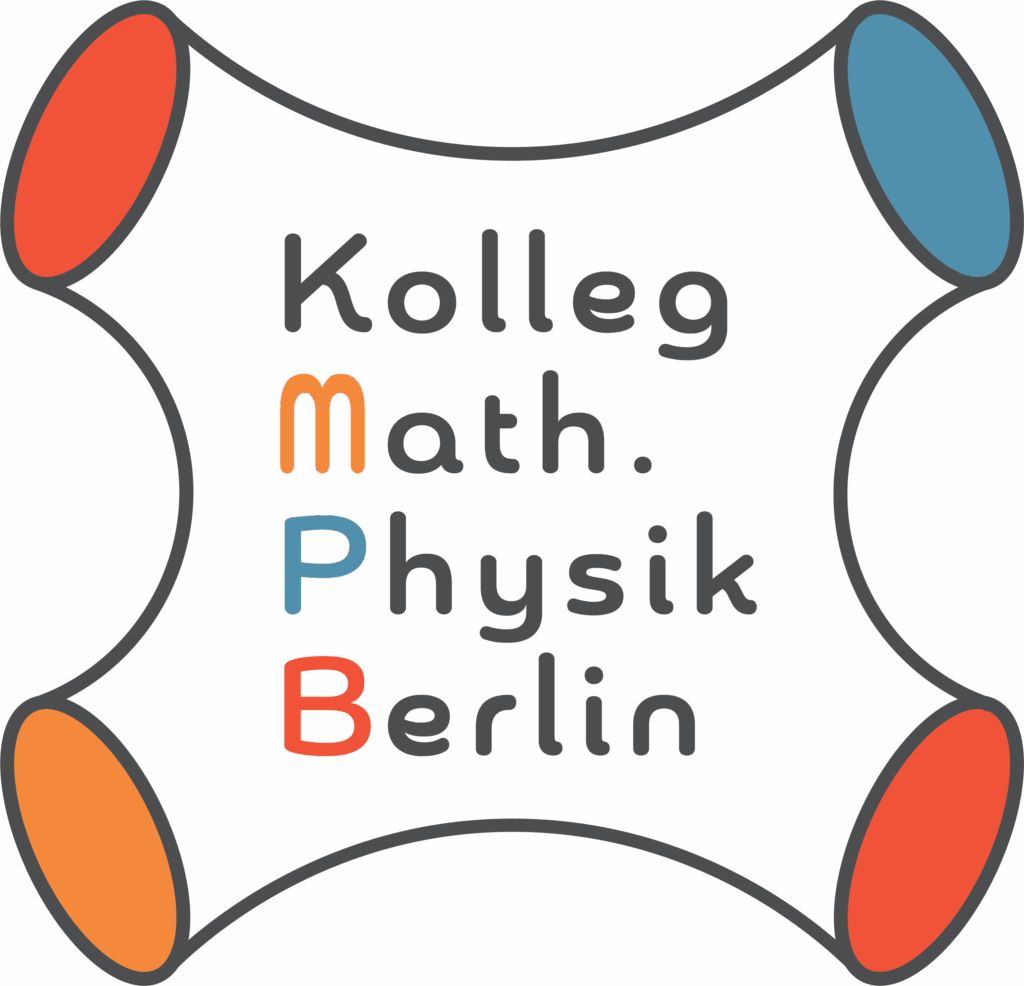
2025/26 Winter Semester Mathematical physics seminars
21. October 2025 @ 11:15 am – 10. February 2026 @ 12:45 pm UTC+2
Mathematical physics seminar
Date: Tuesdays 11:15-12:45 Uhr
Venue: 1.023 (BMS Room, Haus 1, ground floor), Rudower Chaussee 25, Adlershof, 12489 Berlin
Organiser: Gaëtan Borot
Wintersemester 2025-26
21. Oktober 2025
Matijn Francois (University of Geneva)
On the open topological strings/spectral theory correspondence
The topological string/spectral theory correspondence establishes a precise, non-perturbative duality between topological strings on local Calabi–Yau threefolds and the spectral theory of quantized mirror curves. This duality has been rigorously formulated for the closed string sector, but the open string sector is less understood. In this talk, I will explain how one can use open-string partition functions to construct true eigenfunctions for the quantized mirror curve of local F₀. We will then discuss the four-dimensional limit, underlining the implications of the topological string/spectral theory correspondence for spectral problems relating four-dimensional supersymmetric gauge theories to the quantization of their Seiberg–Witten curves.
28. Oktober 2025
Lasse Merkens (HU)
Renormalization group flows from defects in N = 1 minimal models
Leveraging the structure of non-invertible symmetries, we construct a family of
renormalization group flows connecting N = 1 superconformal minimal models:
SM(p, kp + I) → SM(p, kp − I). The triggering operator is G−1/2ϕ(1,2k+1). A key ele-
ment of our argument is that the topological defect lines of the bosonic coset theory
persist in the fermionic case. These flows represent a supersymmetric generalization
of the Virasoro flows discovered by Tanaka and Nakayama and include the previ-
ously known unitary flows (Pogossyan, k = 1, I = 2) as a special case. Furthermore,
we demonstrate the completeness of this family; any flow between models SM(p, q)
and SM(p, q′) can be obtained by composing these fundamental flows.
4. November 2025
Xavier Blot (Unversiteit van Amsterdam)
On the DR-DZ equivalence, and beyond
Witten’s conjecture, proved by Kontsevich, predicted that the Gromov–Witten invariants of a point are governed by the KdV hierarchy. In this talk, I will explain how the DR–DZ equivalence extends this result by constructing the Dubrovin–Zhang (DZ) hierarchy, which governs the Gromov–Witten invariants of any smooth projective variety (and more generally, any cohomological field theory). I will also discuss the equivalence between the DZ and Double Ramification (DR) hierarchies, and, if time allows, their equivalence to new hierarchies associated with the Chiodo class.
This is based on joint works with Danilo Lewanski, Adrien Sauvaget and Sergey Shadrin.
11. November 2025
Taro Kimura (Université Bourgogne Europe)
Non-perturbative Schwinger-Dyson equation for DT/PT vertices
Non-perturbative Schwinger-Dyson (SD) equation is a discrete analog of the loop equation appearing in matrix models and related models. It was initially discussed for the gauge theory partition function and, as in the case of the matrix models, it has a close relation to the underlying infinite-dimensional symmetry of the system. In this talk, I’d like to discuss the non-perturbative SD equation for the higher-dimensional gauge theory partition function, interpreted as the generating function of the DT and PT invariants (DT/PT vertices) for CY3 and CY4 varieties, and address its underlying quantum algebraic structure, which is a consequence of geometric representation theory of the corresponding algebra.
18. November 2025
Piotr Sulkowski (Warsaw University)
Wall-crossing, Schur indices and symmetric quivers
I will show that symmetric quivers encode various
observables of 4d N=2 theories related to wall-crossing phenomena. The
observables in question include (wild) Donaldson-Thomas invariants, as
well as Schur indices, which at the same time are known to reproduce
characters of 2d conformal field theories. Furthermore, symmetric
quivers of our interest encode 3d N=2 theories, therefore all these
relations can be interpreted as a web of dualities between 2d, 3d, and
4d systems.
25. November 2025
Gaëtan Borot (HU Berlin) – (date could be moved!)
Panorama of matrix models and topological recursion I
This is crash course which aims at explaning various aspects of: random matrix ensembles and Coulomb gases, loop equations, spectral curves, topological recursion, maps, free probability, how they fit together and pose some open problems.
2. Dezember 2025
Nikolay Barashkov (MiS Leipzig)
Small deviations of Gaussian multiplicative chaos and the free energy of
the two-dimensional massless Sinh-Gordon model
We derive a bound on the probability that the total mass of Gaussian multiplicative
chaos measure obtained from a Gaussian field with zero spatial average, is small. We also give the probabilistic path integral formulation of the massless Sinh-Gordon model on a torus of side length R, and study its partition function R tends to infinity. We apply the small deviation bounds for Gaussian multiplicative chaos to obtain lower and upper bounds for the logarithm of the partition function, leading to the existence of a non-zero and finite subsequential infinite volume limit for the free energy.
9. Dezember 2025
Gaëtan Borot (HU Berlin) – (date could be moved!)
Panorama of matrix models and topological recursion II
This is crash course which aims at explaning various aspects of: random matrix ensembles and Coulomb gases, loop equations, spectral curves, topological recursion, maps, free probability, how they fit together and pose some open problems.
16. Dezember 2025
Gaëtan Borot (HU Berlin) – (date could be moved!)
Panorama of matrix models and topological recursion III
This is crash course which aims at explaning various aspects of: random matrix ensembles and Coulomb gases, loop equations, spectral curves, topological recursion, maps, free probability, how they fit together and pose some open problems.
6. Januar 2026
13. Januar 2026
Kein Seminar
20. Januar 2026
27. Januar 2026
Maciej Dolega (Institute of Mathematics, Polish Academy of Sciences)
3. Februar 2026
10. Februar 2026

